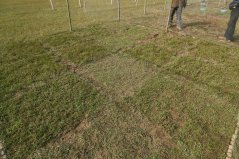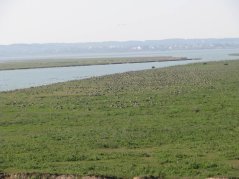Project
Habitat selection of ducks and geese
Yong Zhang MSc studies how temporary flooding affects foraging of wintering ducks and geese at grasslands around lakes in China, using remote sensing and field counts.
Lake water level during the winter directly determine the development of recessional grasslands and thereby the availability of these pastures for herbivorous birds. However, the effect on the bird density is still unclear. By study the water level variations we want to find an optimal hydrology regulation regime to facilitate species coexistence and hence maximizes species richness.
Project description
The Yangtze wetlands are home to a large number of the wintering waterbirds species. Some of the wetlands are protected, whilst others are heavily used for economic activities (e.g., agriculture, aquaculture and transport). The lake water levels are partly determined by human in order to maximize agricultural production and minimize the risk of flooding. This offers an unique opportunity to optimize management activities, and tune interventions in such a way that agricultural production is safeguarded and conservation is maximized. However, at this moment we have no information on the relationship between water levels, forage conditions, and the spatial distribution of the birds. The vegetation biomass partly determines bite size and therefore habitat choice. Forage quality generally decreases with increasing biomass. There is a strong interaction between forage biomass and bird species, influenced by body weight of the species
Lake water level during the winter directly determine the development of recessional grasslands and thereby the availability of these pastures for herbivorous birds. However, the effect on the bird density is still unclear. We expect that this will strongly depend on the timing of the exposure: too early exposure might decrease the forage quality of the pasture during the winter season, too late might decrease the availability of grasslands during the early winter months. Studying this variation should be possible to predict the spatial distribution of the waterbirds in relation to the body mass of the species. This information can then be fed back into management interventions to tune water level in winter in order to maximize forage conditions for water birds during their wintering period in the Yangtze flood plain.
MSc thesis subjects:
Martijn Versluijs 2013. Feeding patch selection and intake rate by herbivorous Anatidae species: the influence of inter-specific competition.
Rick Wessels. 2013. Feeding path selection in differently sized geese species in relation to sward height and sward nitrogen.

